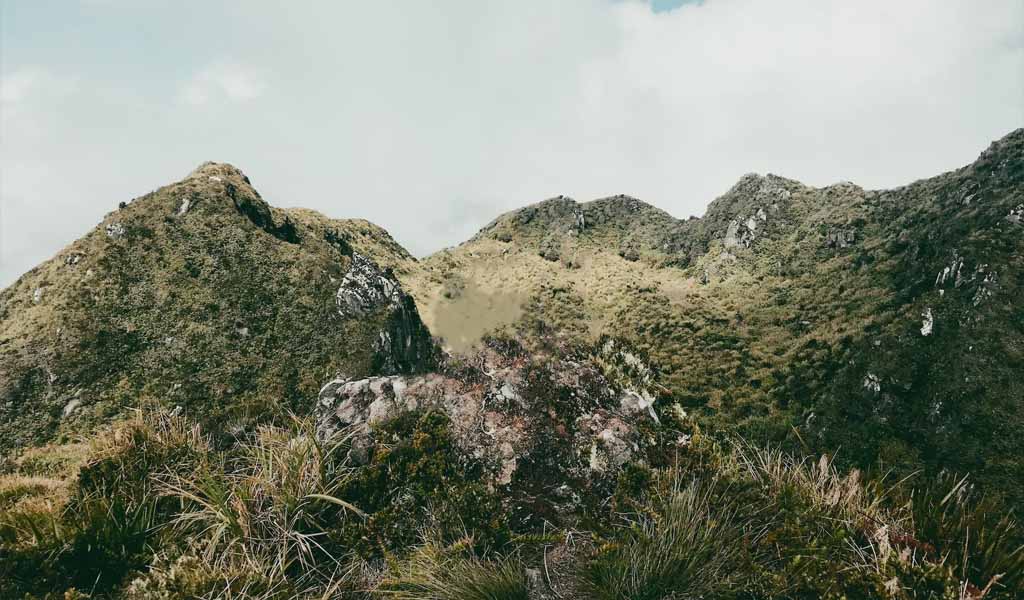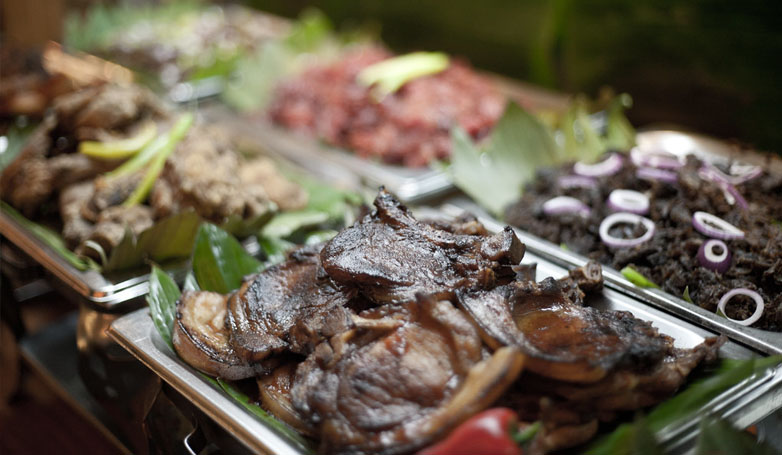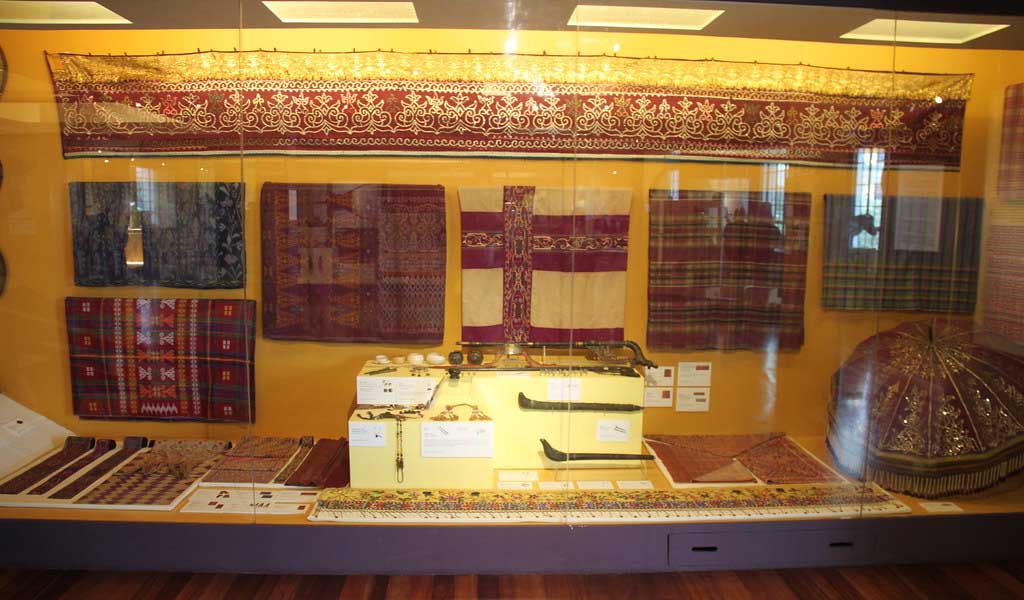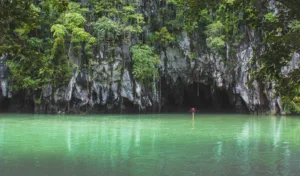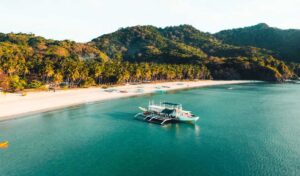Embark on the Adventure of a Lifetime – Conquer the Majestic Mount Apo!
Welcome to the ultimate adventure that will take you to the clouds – hiking up Mount Apo, the Philippines’ crowning natural jewel. Standing at an impressive 2,954 meters (9,692 feet) above sea level, Mount Apo isn’t just any mountain; it’s the tallest in the Philippines and a dream destination for hikers and nature lovers alike. For those daring to conquer its peaks, the rewards are as immense as its vistas: panoramic views, encounters with rare wildlife, and the sense of accomplishment that comes with reaching the apex of the Philippine archipelago.
Hiking Mount Apo, a potentially bucket-list-worthy experience, involves careful planning and a spirit brimming with adventure. This guide is tailored to ensure that when you take that exhilarating step into the wild, you’re armed with the knowledge and confidence to make it to the top and back. So lace up your boots and let’s delve into this comprehensive Mount Apo hiking guide!
Why Mount Apo Should Be On Your Hiking Radar
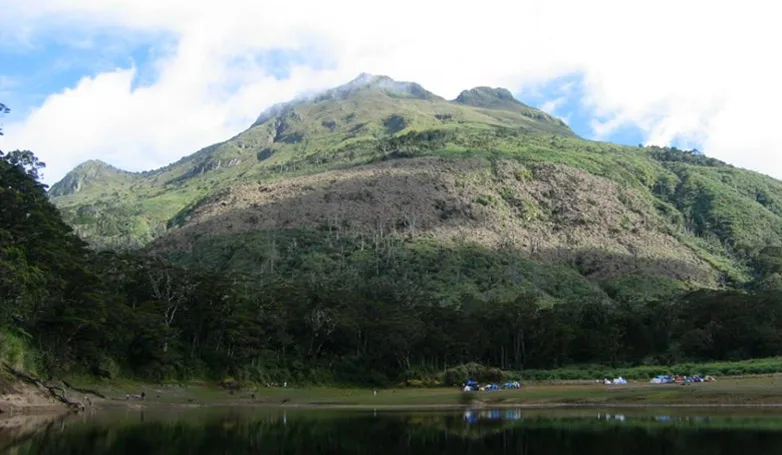
Mount Apo isn’t just a destination; it’s a lifetime experience that all hiking aficionados should aspire to. Known for its stunning beauty, Mount Apo captivates with unique landscapes and biological diversity. The mountain serves as a sanctuary for over 272 bird species, including the majestic Philippine eagle, and is home to a rich tapestry of flora including the famous Waling-Waling orchid, which is considered to be the “Queen of Philippine Flowers.”
The allure extends beneath its forest canopy to its volcanic history, promising hikers an array of enchanting spots such as sulfur vents and hot springs. The mountain’s standing as a protected area underlines its ecological importance and the need for sustainable tourism. Trekking Mount Apo offers not just a test of endurance but a walk through an imperative conservation area that’s begging to be cherished.
Preparing for the Climb

Preparation is key to a successful and enjoyable hike up Mount Apo. This starts with physical endurance, as the climb is strenuous and can last several days. Incorporate cardiovascular training, strength workouts, and endurance hikes into your regime months before your planned ascent.
Choose your gear wisely—it should be suitable for a tropical mountain environment. This means moisture-wicking clothing, a lightweight but warm sleeping bag, a raincoat, and, of course, broken-in hiking boots with good ankle support. As for logistics, research the best time to climb, usually during the dry months from October to May, secure necessary outdoor climbing permits, and map out your preferred trail with the help of local tourism officers or a certified guide.
Choosing Your Trail
Mount Apo is graced with several trails, each offering a distinct path to the summit and catering to varied preferences and fitness levels. Deciding on the right trail for your venture up the mountain is an essential part of your planning process. Let’s explore the unique aspects of the Kidapawan, Kapatagan, and Magpet trails.
Kidapawan Trail -The Challenger’s Route
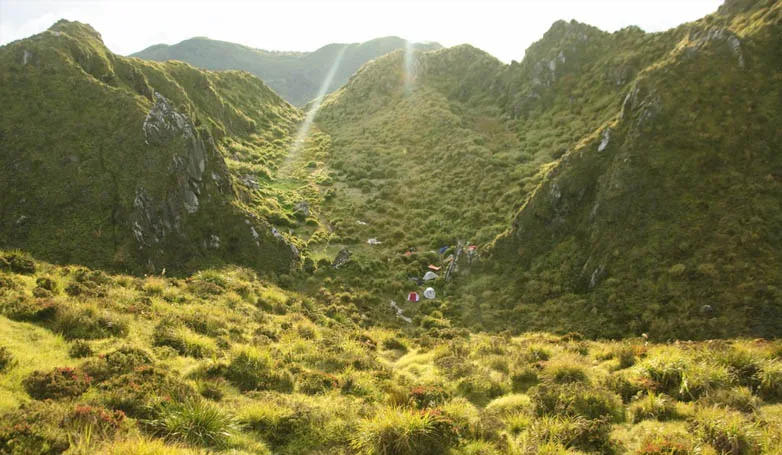
The Kidapawan trail is often recommended for those who are looking for a more challenging and direct ascent to the peak. This route is known for being relatively steeper and more arduous, which is why it appeals to hikers with a good level of physical fitness and an appetite for a straightforward climb.
It starts in the town of Kidapawan, Cotabato, and leads you through dense jungle landscapes and the captivating Lake Agco, where hikers can enjoy the warm, inviting waters of its hot springs. This trail’s steepness requires patience and stamina, but it rewards hikers with quicker access to the summit, making it the popular choice for experienced mountaineers.
Kapatagan Trail – The Scenic Photographer’s Dream

In contrast to the directness of Kidapawan, the Kapatagan trail is especially scenic, which is why photographers and nature enthusiasts might prefer this journey. This trail begins in the town of Digos, Davao del Sur, and it is characterized by a more gradual ascent, passing through farmlands and pine tree-laden paths before reaching the higher-altitude rainforests.
One of the most picturesque landmarks found along the Kapatagan trail is Lake Venado, a serene crater lake nestled at the foot of Mount Apo. The idyllic setting, surrounded by the mountain’s picturesque peaks, makes for a picture-perfect camping spot. The trail from Lake Venado then leads you to the final climb towards the summit, often covered in fog that adds to the mystique of the ascent.
Magpet Trail – The Diverse Adventurer’s Delight
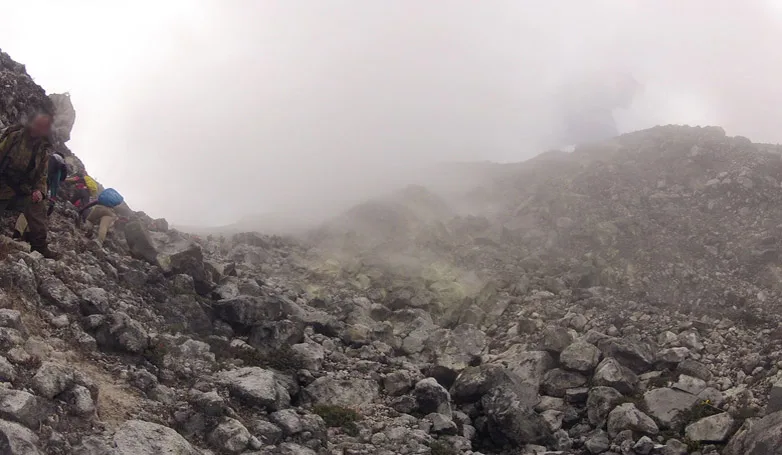
Finally, the Magpet trail, named after the starting point in Magpet, Cotabato, is revered for its biological and ecological diversity. This route is less crowded than Kidapawan and Kapatagan, which makes it an excellent option for those seeking solitude and a close-up experience with the rich biosphere.
Offering a mixed bag of trail conditions from mossy forests that seem out of a fantasy novel to sulfuric vents that remind trekkers of the mountain’s active volcano status, the Magpet trail is undeniably captivating. The ascent via this route is more gradual but it features several river crossings and picturesque landscapes that differ greatly from the other trails.
What to Expect During Your Hike

As you embark on your Mount Apo adventure, expect a trek that’s as unpredictable as it is thrilling. Your path will be interspersed with river crossings, steep slopes, and even relaxing flatlands. Be prepared for possible monkey encounters, exotic bird sightings, and unique plant life.
The weather is another factor to keep in mind. Sudden rains, fog, and chilly temperatures, especially at higher elevations, can occur. It’s essential to stay hydrated, maintain a steady pace to conserve energy, and follow your guide’s directions carefully. Nights will be spent at campgrounds, where tales of the day’s journey can be exchanged under a sky sparkling with stars.
The Summit Experience
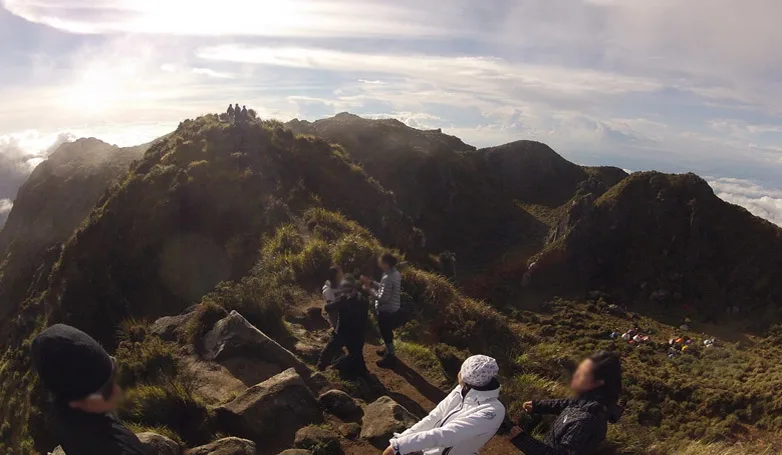
After days of trekking through diverse landscapes and challenging your limits, nothing compares to the elation of reaching the summit. Breathing in the crisp mountain air, you’ll take in views that stretch all the way to the Davao Gulf and the surrounding provinces. The sunrise from Mount Apo’s peak is legendary—a celestial spectacle of colors that’s truly a reward for the intrepid.
Remember to take the time to appreciate this magical moment, understanding the cultural significance of Mount Apo—a sacred place for the indigenous people. Let the triumph of the ascent sink in as you stand atop the ‘King of Philippine Mountains.’
Packing Essentials for Your Mount Apo Hiking Adventure
When embarking on a hike up Mount Apo, one of the most critical steps in your preparation is packing the right gear and supplies. The checklist below encompasses the essentials to ensure a safe, comfortable, and successful journey to the peak of the Philippines’ highest mountain.
Appropriate Hiking Attire and Footwear: Your clothing choice is vital for the hike. Opt for moisture-wicking layers that will keep you dry and comfortable throughout the various climate zones of Mount Apo. Pack a lightweight and waterproof jacket for unexpected showers and a fleece or down jacket for the colder altitudes nearing the summit. For your lower body, convertible hiking pants provide versatility.
The importance of reliable footwear cannot be overstated. A sturdy pair of hiking boots with good grip and ankle support is essential for the rocky and often slippery terrain. Ensure your shoes are well broken in to prevent blisters.
Navigation Tools: Never underestimate the value of good old-fashioned navigation tools, even if there are trail guides available. A map of Mount Apo and a compass, or a GPS device, should be included in your pack to help stay oriented. Knowledge of how to use these tools is equally as important, so brush up on your navigational skills beforehand.
Hydration and Water Filtration: Staying hydrated is crucial, especially when exerting a lot of physical energy at higher altitudes. Carry enough water for the day’s journey between campsites (typically around 2 liters), and safely replenish your supply with a water filtration system or purification tablets from the mountain’s streams.
Food and Snacks: Energy bars, trail mix, dried fruits, and nuts are great for on-the-go snacking and can provide you with quick energy boosts. For your main meals, opt for lightweight, dehydrated meals that only require boiling water. Make sure to pack a small portable stove to heat water and prepare food.
Shelter and Sleeping Gear: After a long day of hiking, you’ll need a good night’s sleep to recharge. Bring a lightweight, weather-resistant tent and a compact sleeping bag rated for temperatures you will encounter on the mountain. An insulation pad can provide additional comfort and warmth against the cold ground.
Emergency Kit and Tools: A first-aid kit is essential for addressing minor injuries, blisters, or cuts that may occur on the trail. Include personal medications, adhesive bandages, antiseptic wipes, gauze pads, medical tape, and pain relief medication.
Furthermore, multifunctional tools like a knife or a multi-tool can be invaluable in the wilderness for gear repair, food preparation, or other unexpected needs.
Triumph and Memories at Mount Apo’s Peak
As our guide comes to an end, so does a remarkable chapter in your hiking diary. Trekking Mount Apo is not just about the physical feat, but it’s an immersive journey that broadens your horizons and deepens your respect for the natural world. You’ll come back with not just photographs but memories etched into your soul and tales of an adventure that only the grandeur of Mount Apo can provide.
The climb may be demanding, but the experiences, from crossing enchanting mossy forests to engaging with the local Bagobo tribe, are both humbling and enriching. Bring the adventure spirit, and an open heart, and leave with stories that will inspire for years to come. Pack your bags, respect the environment, and join the league of extraordinary hikers who have witnessed the wonders of Mount Apo. Your adventure awaits! Must try the Campsites in Luzon for Your Next Adventure.
FAQs About Conquer the Majestic Mount Apo
1. Can anyone climb Mount Apo?
Mount Apo is accessible to hikers with varying levels of experience, from novices to experts. However, the climb is challenging and should not be taken lightly. Proper physical conditioning, gear, and experienced guides are essential for a safe and enjoyable climb.
2. Do I need a guide to climb Mount Apo?
Yes, it is highly advisable to have a guide when climbing Mount Apo. Local regulations may actually require climbers to engage a registered guide for safety reasons. Guides are familiar with the trails and can provide valuable insight into the mountain’s terrain and ecosystem.
3. How long does it take to climb Mount Apo?
The climb typically takes about 3 to 4 days, depending on the chosen trail and the climber’s pace. Some experienced climbers can complete the journey faster, while others may take their time to enjoy the scenery and make the experience more leisurely.
4. What is the best time to climb Mount Apo?
The best time to climb Mount Apo is during the dry season, which in the Philippines usually falls from December to early May. Climbing during these months can help avoid the heavy rains and typhoons that can make the journey more dangerous.
5. Do I need a permit to climb Mount Apo?
Yes, you need to secure a climbing permit before you embark on your hike. This can be arranged through your tour agency or guide, and sometimes directly through local government offices responsible for the mountain’s management.

